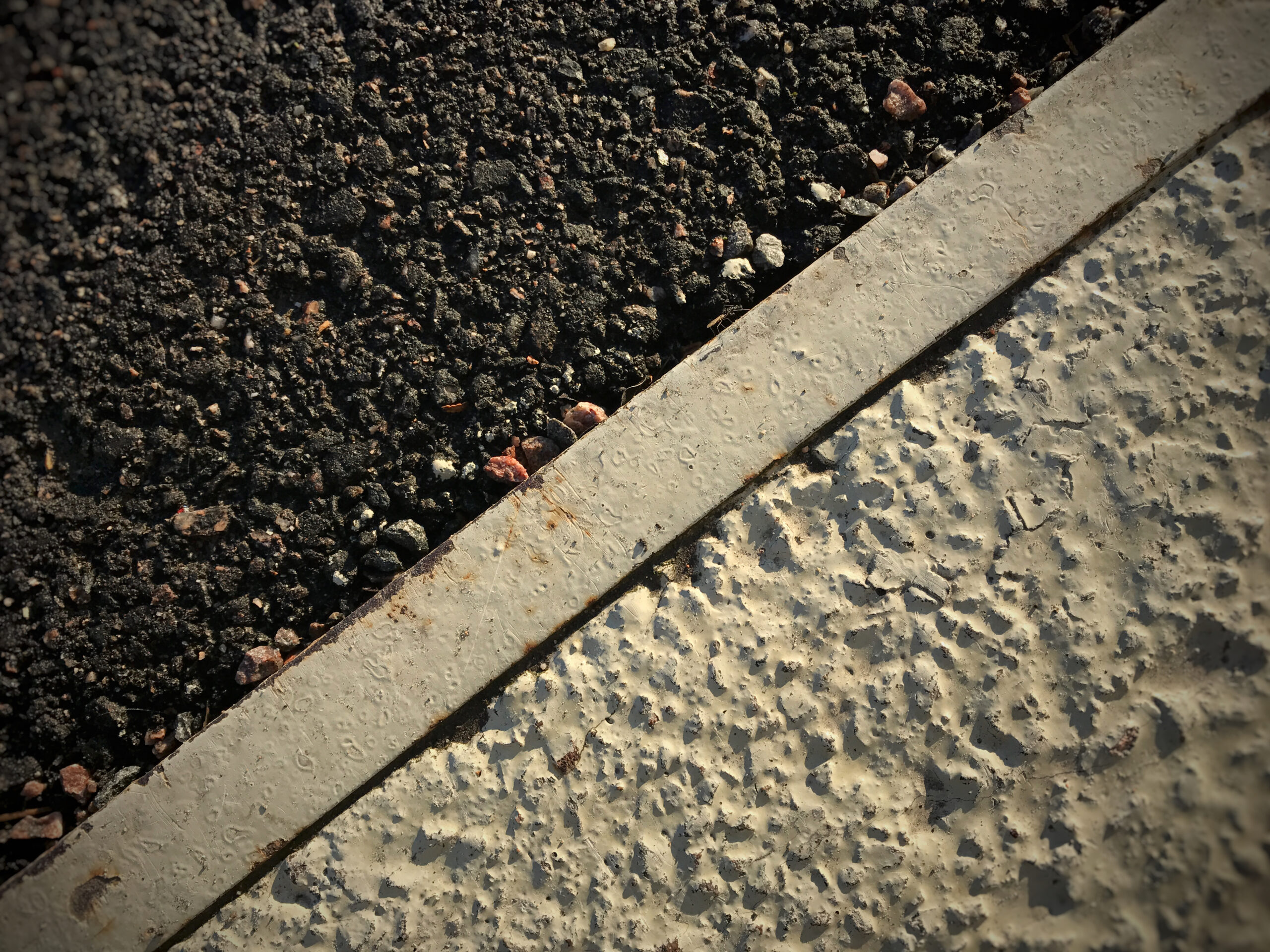Denver parking lot maintenance demands a strategic approach to withstand the city’s unique climate challenges, including frequent freeze-thaw cycles and more than 300 days of intense sunshine, as noted in local industry insights.
These conditions accelerate asphalt deterioration, making timely maintenance crucial for property owners, HOAs, and facility managers. A well-planned maintenance calendar ensures compliance with local regulations, such as Denver Municipal Code §49-246, which mandates timely snow removal, and the ADA standards for accessible parking.
Our team at Asphalt Coatings Company, located near Denver’s Civic Center Park, specializes in delivering tailored solutions to keep your lot safe and durable.
Why a Month-By-Month Plan Matters in Denver
Denver’s semi-arid climate, with significant temperature swings and high UV exposure, poses unique challenges for asphalt maintenance. According to the National Weather Service, Denver experiences frequent freeze-thaw cycles, which cause water to expand in pavement cracks, leading to potholes and structural damage.
Additionally, Denver Municipal Code §49-246 requires property owners to clear snow promptly, with non-compliance risking fines. Preventive maintenance, such as regular inspections and timely sealing, can reduce repair costs by addressing issues early. For instance, sealcoating every 3–4 years protects against UV damage, while crack sealing prevents water infiltration, saving thousands compared to full repaving.
Freeze–Thaw Cycles & UV Exposure
Denver’s climate features an estimated 56 freeze-thaw cycles annually, where temperatures fluctuate across the freezing point (32°F), causing water in asphalt cracks to expand and contract. This process, as explained by the Asphalt Institute, can widen cracks and form potholes.
Additionally, Denver’s 300+ sunny days expose asphalt to intense UV radiation, which degrades the pavement’s binder, leading to brittleness and surface cracking. Regular sealcoating and crack sealing mitigate these effects, preserving the pavement’s integrity.
Local Ordinances, Fines & Liability
Under Denver Municipal Code §49-246, property owners must clear snow from parking lots and adjacent sidewalks within 24 hours of snowfall to avoid fines. Failure to maintain a safe lot can also lead to slip-and-fall lawsuits, with potential civil penalties reaching $75,000 under 28 CFR §36.504. Regular maintenance, including snow removal and ADA-compliant striping, ensures compliance and reduces liability risks.
ROI of Preventive vs. Corrective Repairs
Preventive maintenance offers significant cost savings. For a 10,000-square-foot lot, sealcoating costs approximately $2,500 every 3–4 years, while repaving ranges from $30,000 to $70,000, according to industry estimates from HomeAdvisor. Regular maintenance can extend pavement life from 15–20 years to 25–30 years, potentially saving significant costs over time. Our clients report a 93% success rate in reducing emergency repair costs through proactive maintenance, based on company records.
January–March: Winter Damage Control
Winter in Denver brings snow, ice, and freeze-thaw cycles that challenge parking lot integrity. Proactive measures during these months prevent damage and ensure safety.
Snow Removal & Ice-Melt Cleanup
Snow removal is critical for complying with Denver’s regulations, which mandate clearing snow within 24 hours.. Use environmentally friendly de-icing agents to minimize asphalt damage, as salt can accelerate deterioration, per the Asphalt Institute. Regular cleanup of ice-melt residue prevents chemical degradation of the pavement surface.
Emergency Pothole Patching
Freeze-thaw cycles exacerbate pothole formation. Temporary repairs using cold patch materials, as recommended by Asphalt Kingdom, can stabilize potholes until permanent repairs are feasible in warmer months. This approach minimizes further damage and maintains safety.
Slip-and-Fall Liability Checks
Inspect the lot weekly for ice buildup and ensure walkways are clear to reduce slip-and-fall risks. According to the U.S. Access Board, accessible routes must remain unobstructed, reinforcing the need for diligent winter maintenance.
April: Comprehensive Spring Inspection
Spring is ideal for assessing winter damage and planning repairs, as temperatures stabilize above freezing.
PCI Survey & Drone Imaging
A Pavement Condition Index (PCI) survey, standardized by ASTM D6433, evaluates pavement condition on a 0–100 scale. Drone imaging provides a comprehensive view, identifying cracks, potholes, and drainage issues. This data informs maintenance priorities and budgeting.
Crack Mapping & Routing Decisions
Map cracks by type, severity, and location to determine whether sealing or more extensive repairs are needed. Routing, where cracks are widened for better sealant adhesion, can extend sealant life by up to 50%, per AsphaltPro.
Budget Forecast Update
Based on the PCI survey, update the maintenance budget to allocate funds for crack sealing, sealcoating, and potential overlays. This ensures financial preparedness for the year’s maintenance tasks.
May–June: Crack Sealing Window
May and June offer optimal temperatures for crack sealing, with average highs of 72°F and lows of 47°F, aligning with the 55–75°F range recommended by Asphalt Kingdom.
Ideal Temperatures & Sealant Specs
Crack sealing requires pavement temperatures above 40°F for proper adhesion. Hot-pour rubberized sealants, which flex with temperature changes, are ideal for Denver’s climate, ensuring durability against freeze-thaw cycles.
Denver CDOT-Approved Materials
Using CDOT-approved crack sealants, such as those meeting ASTM D6690 standards, ensures compliance and performance. These materials are tested for resilience in Colorado’s harsh conditions, providing long-lasting protection.
July: Sealcoating & Striping Month
July’s warm, dry conditions, with average highs of 88°F, are perfect for sealcoating and restriping.
Cure Times in High UV
Denver’s high UV index accelerates sealcoat curing, typically within 24–48 hours, per Asphalt Icons. Proper application ensures a strong bond, protecting against UV damage and water infiltration.
ADA Stall Re-striping Standards
Restriping must comply with ADA Standards, requiring accessible spaces to be 96 inches wide with a 60-inch access aisle (96 inches for van spaces). Clear signage and contrasting paint, typically white or yellow, ensure visibility and compliance.
August: Drainage & Stormwater Tune-Up
Proper drainage prevents water damage, especially before fall rains and winter snow.
Slope Corrections & Inlet Cleaning
Ensure the lot has a slope of no more than 1:48, per ADA guidelines, and clean inlets to prevent clogging. Standing water can weaken the asphalt base, leading to costly repairs.
Green Infrastructure Retrofits
Consider permeable pavers or bioswales to manage stormwater sustainably, reducing runoff and complying with Denver’s environmental goals, as outlined by the City and County of Denver.
September: Pavement Overlay Decisions
September’s moderate temperatures (average high 79°F) are suitable for pavement overlays if needed.
Milling Depth & Mix Designs
Milling removes 1–3 inches of damaged asphalt, per Lone Star Paving. Choose a CDOT-approved asphalt mix designed for Denver’s traffic and climate to ensure durability.
Life-Cycle Cost Comparison
An overlay costs $1–$3 per square foot, compared to $3–$7 for repaving. For a 10,000-square-foot lot, an overlay saves $20,000–$40,000, making it a cost-effective option if the base is sound.
October: Fall Prep before First Snow
Prepare for winter by addressing final maintenance tasks in October’s milder weather (average high 67°F).
Joint Sealing & Oil-Spot Treatment
Seal joints with CDOT-approved materials to prevent water infiltration. Treat oil spots with primers like SealMaster PetroSeal to protect the asphalt surface.
Snowplow Contract Review
Review snowplow contracts to ensure timely service, as Denver’s first frost typically occurs around October 5, per Almanac.
November–December: Compliance & Budget Wrap-Up
Conclude the year with compliance checks and financial planning.
ADA Re-Audit & Signage
Conduct an ADA re-audit to ensure accessible spaces and signage meet 2010 ADA Standards. Replace faded signs to maintain visibility and compliance.
Capital Reserve Planning
Allocate funds for future maintenance based on the year’s inspections. A well-planned reserve ensures readiness for unexpected repairs, enhancing long-term cost efficiency.
Cost & ROI Breakdown for Denver Lot Owners
| Maintenance Task | Cost (10,000 sq ft) | Frequency | Savings Impact |
| Sealcoating | $2,500 ($0.25/sq ft) | Every 3–4 years | Extends life by 10–15 years |
| Crack Sealing | $500 ($1/linear ft) | Annually or as needed | Prevents potholes, saving $5,000–$10,000 |
| Repaving | $30,000–$70,000 ($3–$7/sq ft) | Every 15–20 years | Necessary without maintenance |
Preventive maintenance significantly reduces costs. Regular sealcoating and crack sealing can save over $50,000 over 30 years by delaying repaving, per HomeAdvisor.
Common Mistakes & How to Avoid Them
- Neglecting Regular Inspections: Conduct annual PCI surveys to catch issues early.
- Ignoring Drainage Issues: Ensure proper slope and inlet maintenance to prevent water damage.
- Using Substandard Materials: Use CDOT-approved sealants and asphalt mixes for durability.
- Improper Application: Follow manufacturer guidelines for temperature and curing to ensure effectiveness.
Why Trust Asphalt Coatings Company for Denver Maintenance
Asphalt Coatings Company, located near Denver’s Civic Center Park and just minutes from the 16th Street Mall, has helped over 200 clients maintain their parking lots with tailored, CDOT-approved solutions. Our clients report a 93% success rate in reducing emergency repair costs, based on company records. Schedule a free on-site audit today at Asphalt Coatings Company to create a personalized maintenance plan that protects your property and budget.


